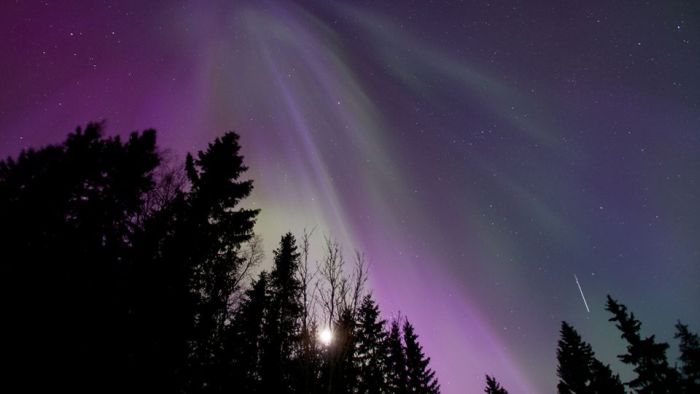

The best resource: The Icelandic Meteorological Office website does a great job of tracking all things weather-related. If you want to stay in town, book a room at the Canopy by Hilton Reykjavik City Centre. You can even request that the hotel staff calls and wakes you up if the northern lights are out.Ībout an hour’s drive from Reykjavik near the Golden Circle is Thingvellir National Park it’s a drive worth experiencing to get away from the city lights. However, the best view might be from the outdoor geothermal pool underneath the hotel.
#The northern lights windows
Where to stay: On an old geothermal energy site, the Ion Adventure Hotel is designed around the surrounding views: large wall-size windows open up to the surrounding mountain range. While rare and tough to predict, when conditions are right, you can view the northern lights in states like New York, Minnesota, Michigan and Maine and, occasionally, Midwest states as far south as Kansas and Colorado. When to visit: When there is high solar activity. Where to find the northern lights Continental US

Now that you’ve got the basics of photographing the elusive northern lights, on to the spots where you can best see them around the world. As soon as you click the shutter, shine the flashlight toward your subjects, at the ground, and then back at your subjects. If you want to take portraits in front of the northern lights, specifically, you will need to light up your subjects. Wide-angle lens: Not a requirement, but the best way to capture a stunning pro-quality shot of the horizon.įlashlight: One trick I learned while trying to find the northern lights in northern Finland was to bring along a flashlight. All of this being said, you don’t want to move your camera around while this is happening, or you’ll blur the image. This helps capture as much of the northern lights' movement as possible. The smaller the value, the more light your camera will let in during the exposure. Tripod: You’ll need a steady surface to take photos of the northern lights, as your f-stop (aperture) will be set at a minimum value.
#The northern lights manual
Any digital single-lens reflex camera with a manual settings option will do the trick. Unless you’re lucky enough to catch some seriously strong collisions, you’ll need some equipment, including a camera, tripod, wide-angle lens and even a flashlight.Ĭamera: Don’t depend on your phone camera for this task, no matter how powerful the lens is. If you plan on capturing the light show with your iPhone camera, think again. Part of the fun is the unpredictable nature of the lights. Additionally, sometimes the lights will only appear as a faint color filter across the night sky - barely a shimmer on the horizon. See privacy policy.Īccording to, particles colliding with oxygen will produce green and yellow, while nitrogen results in red and violet. The Points Guy will not share or sell your email. I would like to subscribe to The Points Guy newsletters and special email promotions. The various colors indicate what types of atoms and molecules are interacting. The bursts of colorful light you see are actually the colliding particles and atoms. This phenomenon occurs when a solar flare penetrates the Earth’s magnetic field and shoots charged particles into the atoms and molecules that make up our atmosphere. The aurora is at its most active around September's equinox.

It’s the beginning of aurora season, when it stays dark for longer and longer stretches of time, increasing the likelihood of a wild light show. However, there are a handful of destinations around the world where aurora hunters are more likely to encounter this natural phenomenon.įor your best shot at seeing the northern lights this year, head north to the Arctic Circle as early as the last week of August, depending on the destination. Pair the specific weather conditions that need to occur for them to appear with how difficult it can be to get away from light pollution, and you’re in for an adventure. We are currently in the midst of a massive solar storm that makes the sometimes-tough-to-see northern lights easier to spot in locations as far south as Kansas. Scientifically speaking, the northern lights – also known as aurora borealis – are formed when electrically charged solar particles collide with the earth's atmosphere. However, spend an evening staring slack-jawed at the northern lights, and you’ll quickly be reminded of your place in the universe. It’s not easy to feel small in a world determined to keep us all connected all the time.


 0 kommentar(er)
0 kommentar(er)
